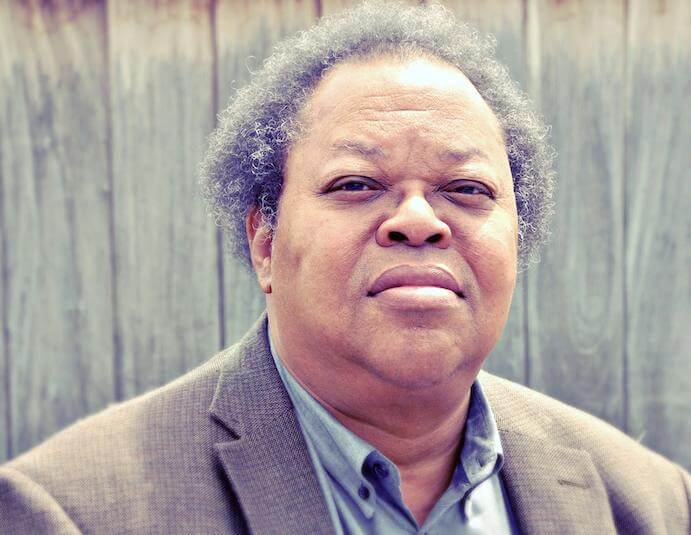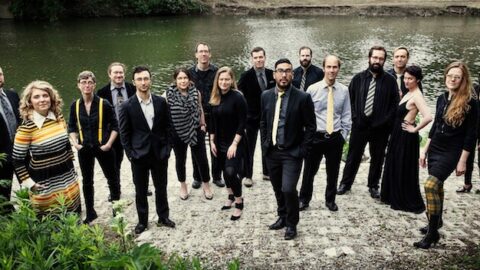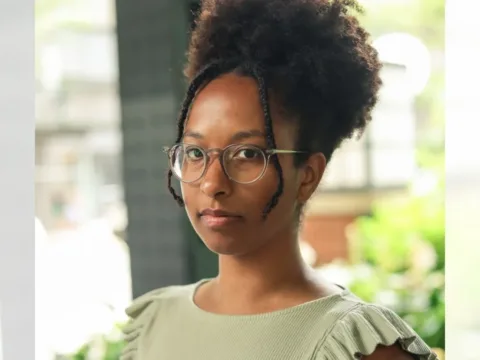When you arrive at the The Harris Theatre for Music and Dance, you come-in off a busy Chicago road, descend three flights of fluorescent illuminated stairs into a concrete lobby, grab a drink, and step into a 1,500 seat hall. Among Harris’ 35 resident organisations, you’ll find Hubbard Street Dance Chicago and collaborations with Chicago Opera Theatre and Chicago’s Lyric Opera. As a place to hold a concert of new music–especially one beginning with a string quartet–it seems positively cavernous.
By 7:30pm on 7th October 2016, though, I was joined by more than 1,000 Chicagoans as we took our seats for an evening at the Ear Taxi Festival featuring six world premieres –all from Chicago composers, performed by two of Chicago’s stalwart ensembles–and the vast space took on a bustling, electric atmosphere.
As we settled in, the Spektral Quartet’s Violist Doyle Armbrust explained to us that their half-programme of three world premieres was actually quite a departure for this quartet, whose mission is to “bring works of the past into conversation with works of today.” This subtle distinction–that it is the music of the past that needs to successfully interact with the music of our time to stay alive–goes some way to articulating what makes the Spektral Quartet so special. One cannot realistically survive as a professional quartet without virtuosity and commitment. Spektral have both in droves, but they also have a simple, enthusiastic and musical approach to music making. They, you know, play phrases. They subtly and carefully match their vibrato, their timbre, their bow speed. They care about playing in tune amidst wild, gestural, music. When they play a scratch sound, they play it so it sounds like a beautiful, musical thing.

Perhaps because he was such a great player himself, George Lewis’ music has always seemed particularly demanding and rewarding in these exact areas. His piece, String Quartet No 1.5: Experiments in Living, ripped out into the concert hall with immediate energy. When, about halfway through, a string broke and Doyle returned to the mic to ask if the Quartet should start again or….he didn’t even finish his question as the whole audience virtually demanded to hear the piece again from the beginning.
When he first heard a run through, Lewis apparently commented simply: “Wow. I wrote a pretty intense piece.” Intense, it is. And exuberant in this quartet’s hands. Hopefully there will be many opportunities for Spektral to perform and eventually record this piece, because it is one that deserves to be heard widely.
Perhaps they weren’t able to bring music of the past into this concert, but the other two premieres on Spektral’s programme did bring very different voices to the conversation. Quartet Movement by Samuel Adams featured a phrase of music built around a triad that returned again and again as an electronic tone slowly descended. A sort of Lucier-meets-Schubert effect that was at once calming and completely disorienting. Two snare drums on either side of the Quartet provided white-noise that clicked on and off intermittently. Almost everything in this piece frustrated me while I was listening to it, yet every time I remember it–and I have remembered it often since the concert–I find myself growing more fond of it.
Spektral’s set ended with Prospective Dwellers from Chicago cellist and improvisor Tomeka Reid. I don’t actually know if this particular piece involved improvisation or was fully notated, but the music–which was a transcription of a work that drew on Tomeka’s interviews with residents on Chicago’s South Side–did draw a completely new character and rhythmic vitality into the evening’s music.

After a short break, Ensemble Dal Niente took to the stage to give us their three premieres. One aspect of new music that is easy to bluster on about but much harder to actually find, is that of a close community. This was my first time hearing Dal Niente live, and it was wonderful to first meet them in Pierce Gradone’s To Paint Their Madness, as this was a piece that he had so clearly written with these specific players in mind. The energetic dynamic changes and precise articulation that highlighted a shifting array of mini-ensembles within the texture of Gradone’s piece played directly to the strengths of an ensemble of friends that rehearse deeply. The gorgeous harmony–which was unusually expansive for a microtonal soundscape–rewarded Dal Niente’s lineup of virtuosic soloists who have spent hours arriving at a lush and blended ensemble tone. Among the soloistic moments, the mad speaking/playing solo in the flute part was particularly naturally and energetic in Constance Volk’s hands.
Chris Fisher-Lochhead’s stutter-step the concept was an obvious and complete contrast to Pierce’s music. The extremely short and fragmentary music built up before starting to roll and kaleidoscope around in front of us. Two (literal) screams punctuated the form. While it was unfailingly precise and broken in fragments that disassembled and (attempted to) reassemble throughout the piece, the musicians of Dal Niente brought Fisher-Lochhead’s generosity of colour to the fore, with the horn player activating piano resonances and the music taking on the sense of a beautiful memory that one keeps almost remembering.
It takes an unusual amount of versatility to transition from this sort of precise “realisation” of scores to a more collaborative form of composition and performance. When I had attended their rehearsal of Jeff Parker’s Water on Glass earlier in the week (without the composer), I watched and listened with–I have to admit–a mild sense of impending doom as Dal Niente spent two hours taking a simple series of chords apart. They dutifully tuned and coloured each one, before putting them back together into two block phrases. As soon as the performance started, though, it was obvious the final piece was a much more fluid and joyful sort of music. There was a wild, flapping low synth played by Parker throughout much of the work, as those chords came to life in a quasi-improvised texture that ebbed and flowed and carried us to the end of the evening.
























